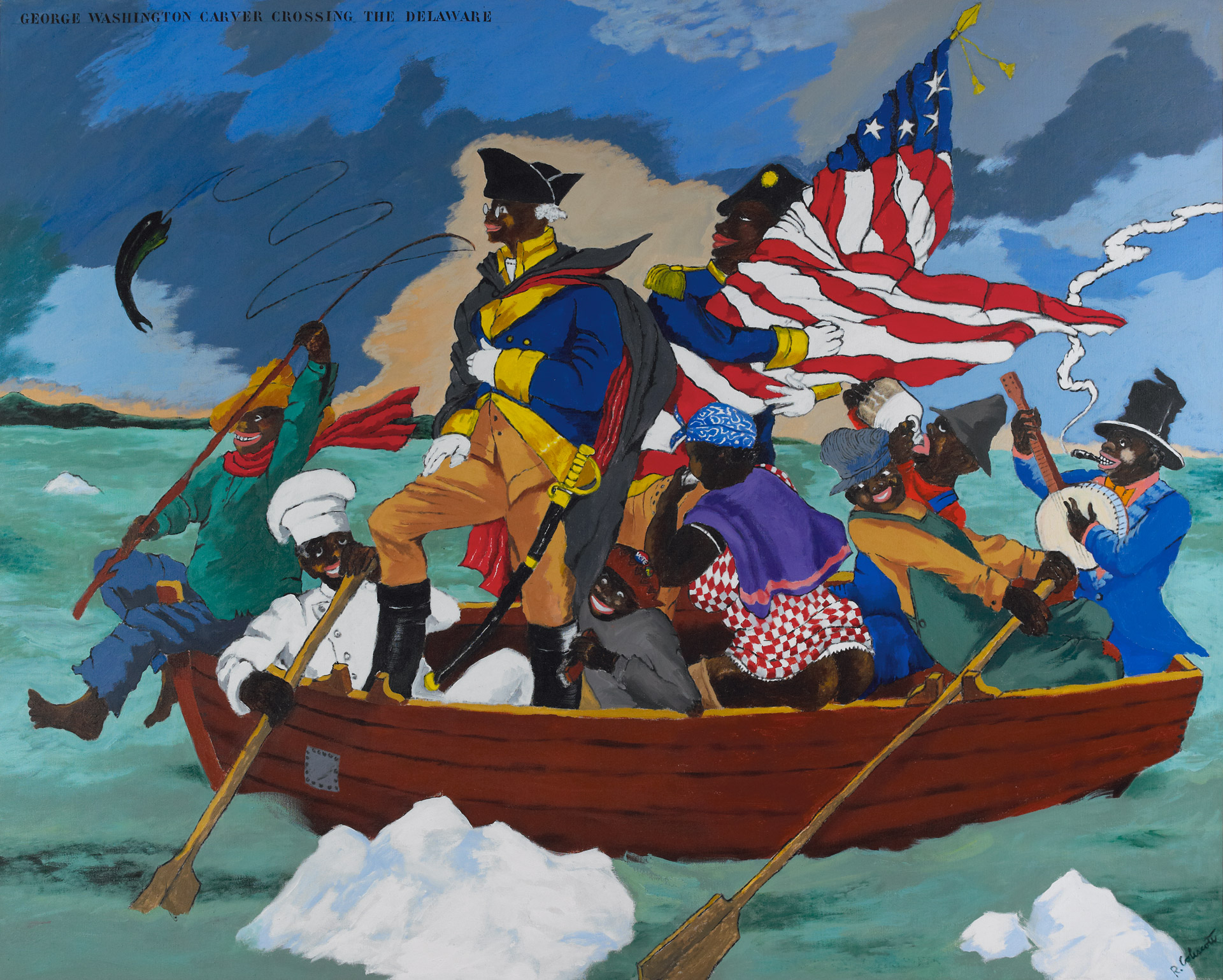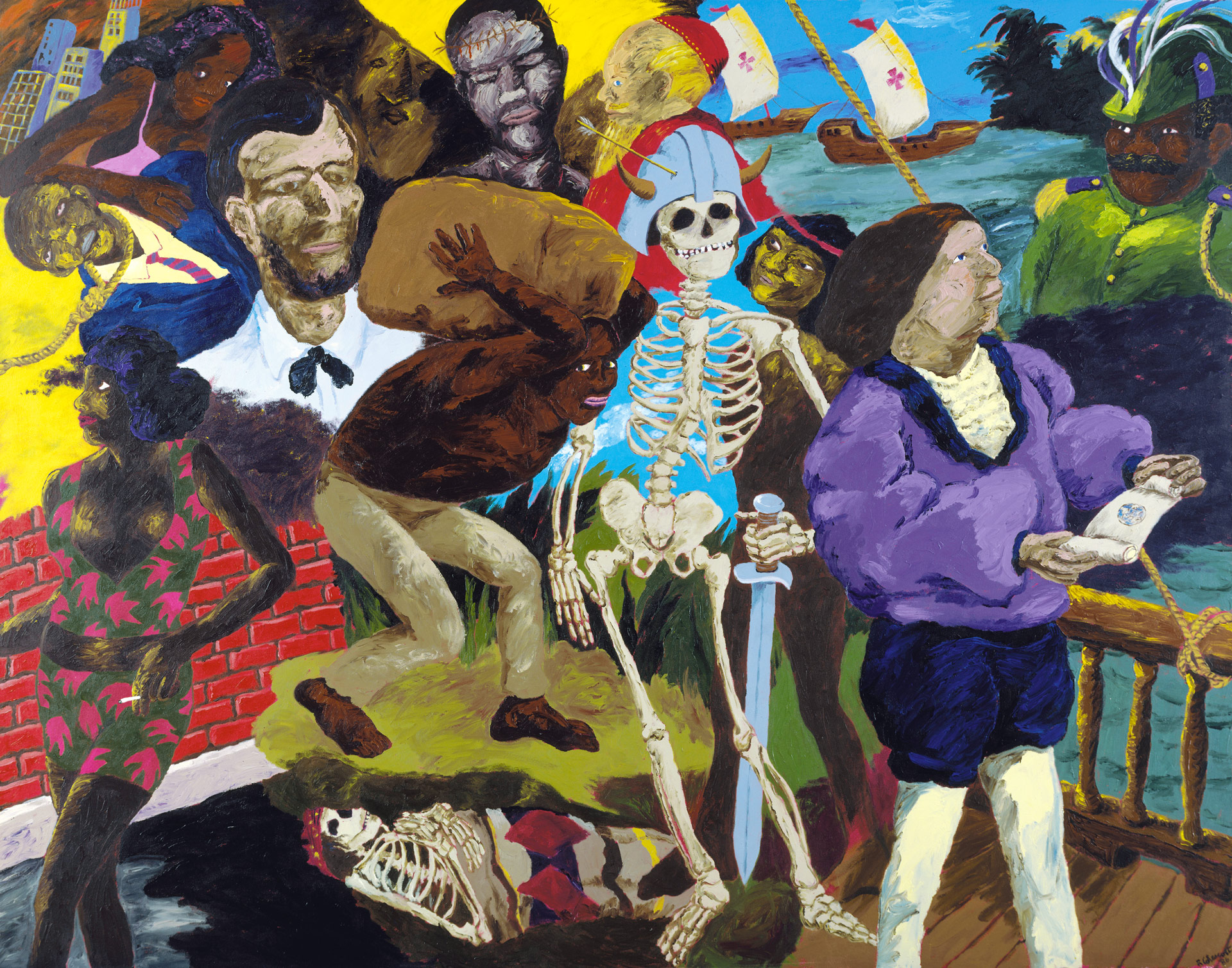Les Demoiselles d’Alabama: Vestidas
Robert Colescott
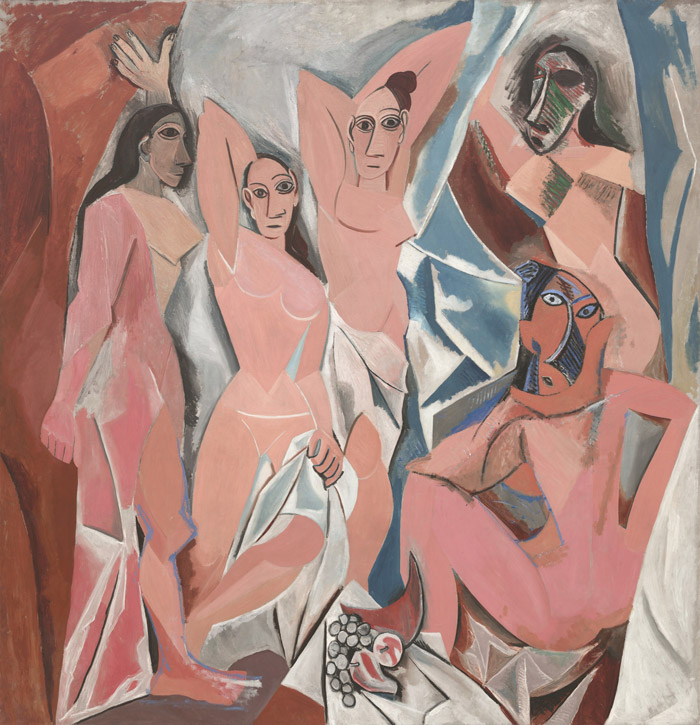
Les Demoiselles d'Avignon, 1907, Pablo Picasso, oil on canvas, Museum of Modern Art, New York, © 2017 Estate of Pablo Picasso / Artists Rights Society (ARS), New York
Picasso’s painting is a milestone in the development of the Cubist style. The faces of the two women to the right were inspired by Iberian sculpture and African masks. Picasso would have come in contact with these artworks because France, at the height of their colonial power, removed many artifacts from their geographical and cultural contexts and displayed them in museums.
"I felt I could . . . move back towards the origins of those figures [in the Picasso], which were African people and specifically African women. So I tried to imagine moving the work from [Picasso’s] sense of Africanism to a sense of the reality of these women that were a part of the source."
– Robert Colescott
This painting uses Picasso’s appropriation of African art as an example of Europe’s infatuation with exoticism and ideas of "primitivism." Colescott takes a critical look at who is painting and who is painted. He changes the locale from Picasso's d'Avigon to d’Alabama and approaches the scene through the history of colonial America.
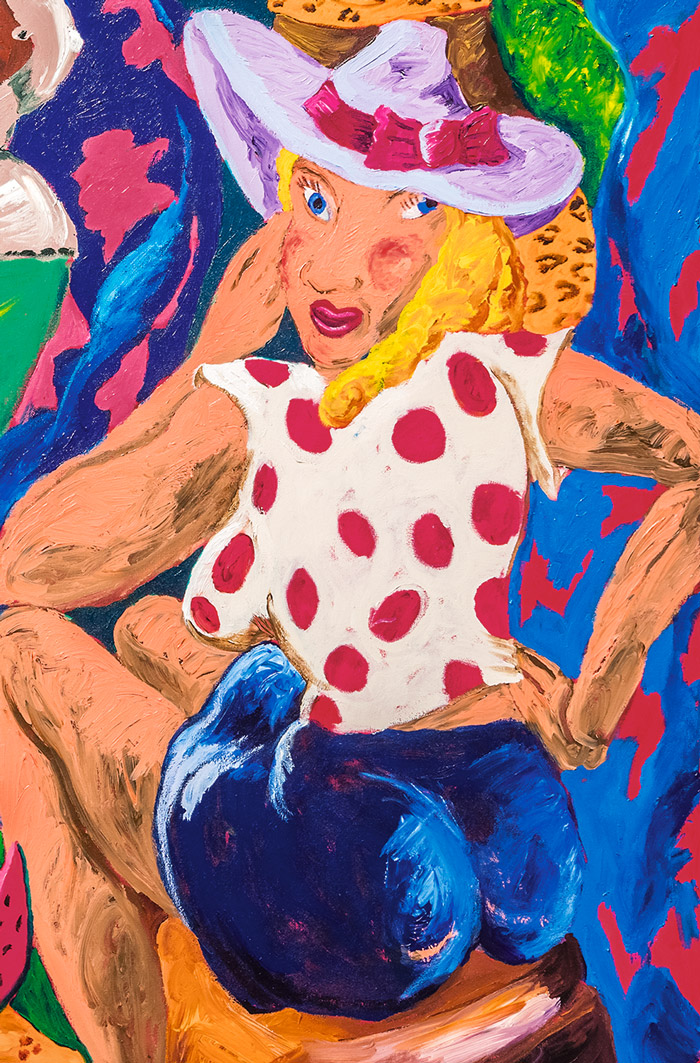
Les Demoiselles d’Alabama: Vestidas (detail), 1985, Robert Colescott.
The voluptuous blonde is a recurring figure in Colescott’s paintings. She represents an object of desire that is a stereotype in its own right. The blonde-haired, blue-eyed Eurocentric ideal of beauty is in strong contrast to the other representations of femininity in this painting.
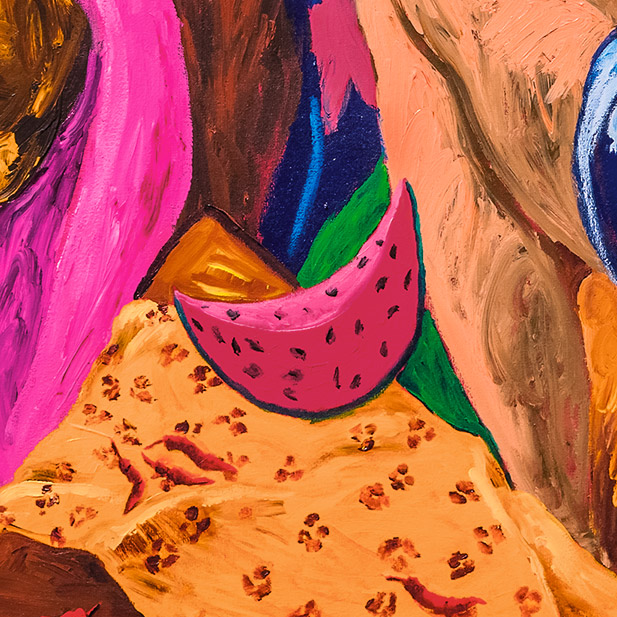
Les Demoiselles d’Alabama: Vestidas (detail), 1985, Robert Colescott.
This watermelon slice is a nod to the fruit platter in Picasso’s painting. For Picasso, whose scene is in the South of France, this is a symbol of fertility. In the context of Colescott’s painting, which depicts the southern United States, the watermelon takes on a different meaning as it was a frequently recurring motif in racial stereotypes of Black people.
"I would just be happy if the . . . if Black artists, Black American artists could be free to express themselves. I think then they could do their real job, which is being courageous . . . courageous citizens, courageous artists."
– Robert Colescott
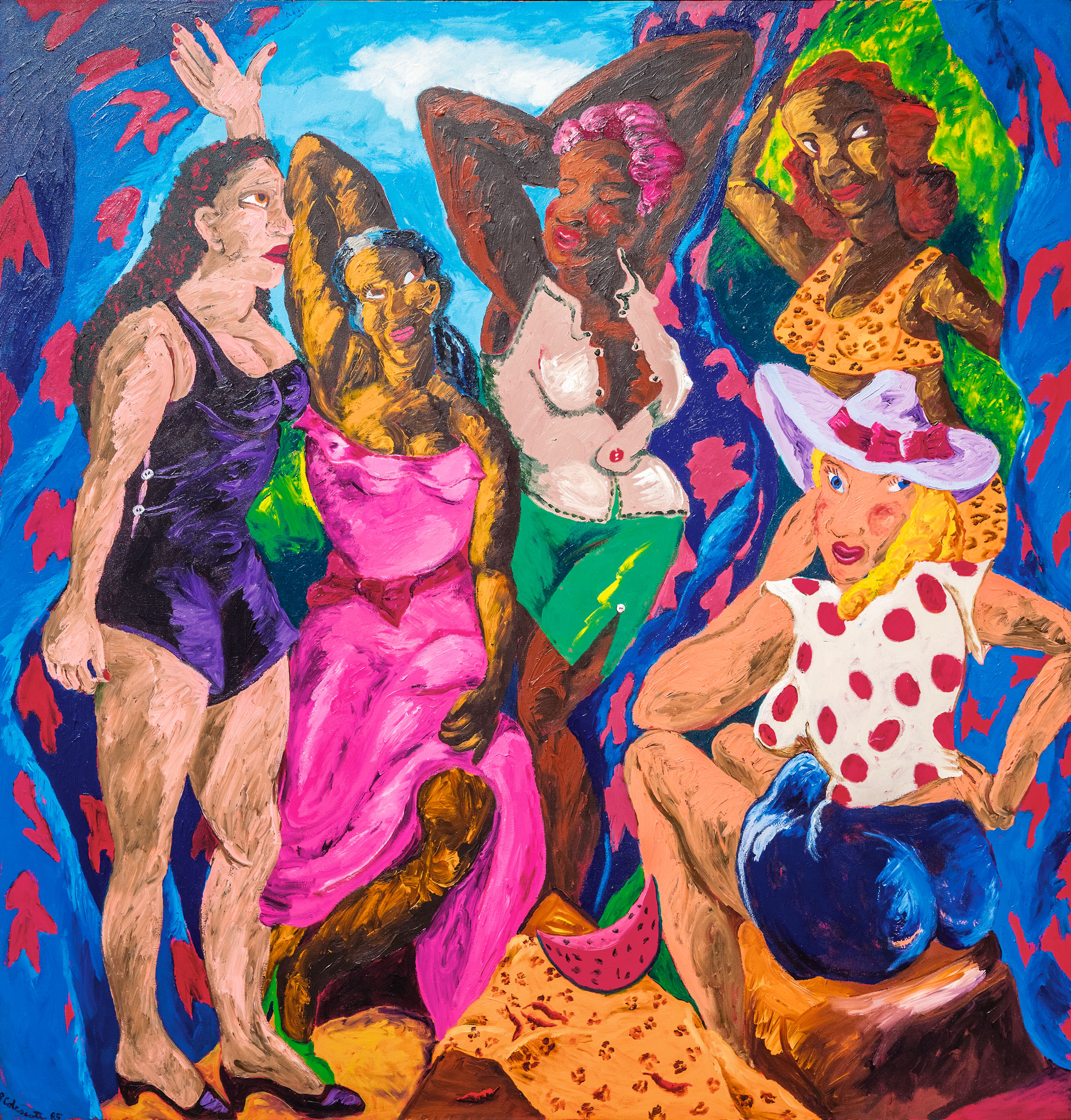
More Robert Colescott
Images: Les Demoiselles d’Alabama: Vestidas, 1985, Robert Colescott, acrylic on canvas, 96 x 92 in., Seattle Art Museum, General Acquisition Fund, Bill and Melinda Gates Foundation Art Acquisition Fund, Margaret E. Fuller Purchase Fund, and Patricia Denny Art Acquisition Fund, 2016.12, © 2017 Estate of Robert Colescott / Artists Rights Society (ARS), New York, photo: Mark Woods. George Washington Carver Crossing the Delaware: Page from an American History Textbook, 1975, Robert Colescott, acrylic on canvas, 84 x 108 in., Private collection, Saint Louis, © 2017 Estate of Robert Colescott / Artists Rights Society (ARS), New York, photo: Jean Paul Torno. Knowledge of the Past is the Key to the Future: Some Afterthoughts on Discovery, 1986, Robert Colescott, acrylic on canvas, 90 x 114 in., The Metropolitan Museum of Art, New York, Arthur Hoppock Hearn Fund, 1987.166, © 2017 Estate of Robert Colescott / Artists Rights Society (ARS), New York / Art Resource, NY.



